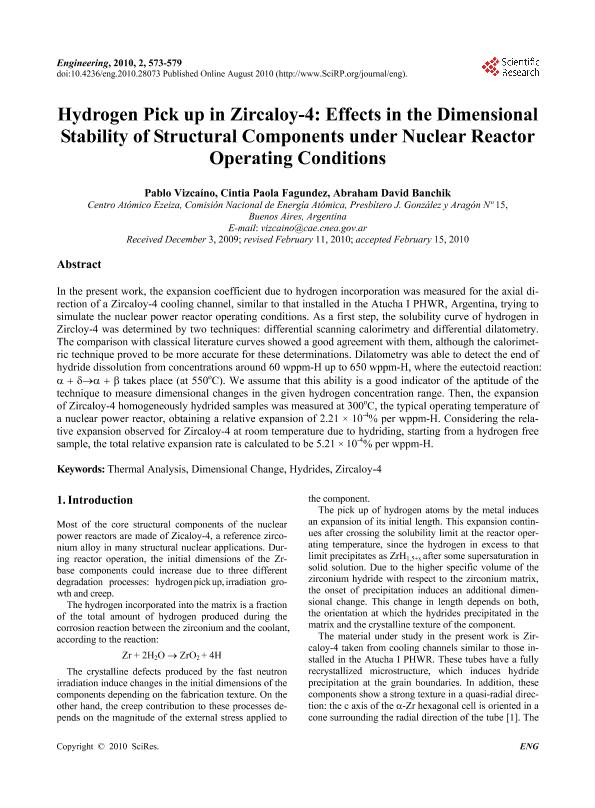Artículo
Hydrogen Pick up in Zircaloy-4: Effects in the Dimensional Stability of Structural Components under Nuclear Reactor Operating Conditions
Fecha de publicación:
08/2010
Editorial:
Scientific Research
Revista:
Engineering
ISSN:
1947-394X
Idioma:
Inglés
Tipo de recurso:
Artículo publicado
Clasificación temática:
Resumen
In the present work, the expansion coefficient due to hydrogen incorporation was measured for the axial direction of a Zircaloy-4 cooling channel, similar to that installed in the Atucha I PHWR, Argentina, trying to simulate the nuclear power reactor operating conditions. As a first step, the solubility curve of hydrogen in Zircloy-4 was determined by two techniques: differential scanning calorimetry and differential dilatometry. The comparison with classical literature curves showed a good agreement with them, although the calorimetric technique proved to be more accurate for these determinations. Dilatometry was able to detect the end of hydride dissolution from concentrations around 60 wppm-H up to 650 wppm-H, where the eutectoid reaction: takes place (at 550o C). We assume that this ability is a good indicator of the aptitude of the technique to measure dimensional changes in the given hydrogen concentration range. Then, the expansion of Zircaloy-4 homogeneously hydrided samples was measured at 300o C, the typical operating temperature of a nuclear power reactor, obtaining a relative expansion of 2.21 × 10-4% per wppm-H. Considering the relative expansion observed for Zircaloy-4 at room temperature due to hydriding, starting from a hydrogen free sample, the total relative expansion rate is calculated to be 5.21 × 10-4% per wppm-H.
Palabras clave:
THERMAL ANAYLYSIS
,
DIMENSIONAL CHANGE
,
HYDRIDES
,
ZIRCALOY-4
Archivos asociados
Licencia
Identificadores
Colecciones
Articulos(SEDE CENTRAL)
Articulos de SEDE CENTRAL
Articulos de SEDE CENTRAL
Citación
Vizcaino, Pablo; Fagundez, Cintia Paola; Banchik, Abraham David; Hydrogen Pick up in Zircaloy-4: Effects in the Dimensional Stability of Structural Components under Nuclear Reactor Operating Conditions; Scientific Research; Engineering; 2; 8; 8-2010; 573-579
Compartir
Altmétricas




